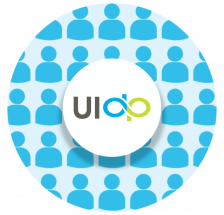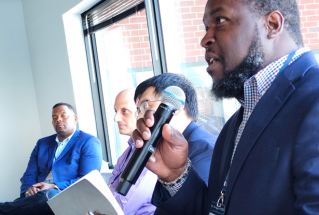Breaking Barriers: Building Robust Research Capabilities at HBCUs
Sept. 12, 2023 —Many historically Black colleges and universities (HBCUs) are seeking ways to bolster their research capabilities. Some, like Morgan State University, have made attaining Carnegie R1 status (very high research activity) a tangible, public goal. According to the Carnegie Classifications, no HBCU is currently at that level, and only 11 are classified as R2 (six of which are UIDP members–Howard University, Jackson State University, Morgan State University, North Carolina Agricultural and Technical State University, Tennessee State University, and University of Maryland Eastern Shore).
—Many historically Black colleges and universities (HBCUs) are seeking ways to bolster their research capabilities. Some, like Morgan State University, have made attaining Carnegie R1 status (very high research activity) a tangible, public goal. According to the Carnegie Classifications, no HBCU is currently at that level, and only 11 are classified as R2 (six of which are UIDP members–Howard University, Jackson State University, Morgan State University, North Carolina Agricultural and Technical State University, Tennessee State University, and University of Maryland Eastern Shore).
While R1 status is a worthy goal, it’s not recognition alone that fuels HBCUs’ desire to strengthen research capabilities. A lot of benefits come with leveling up.
Advantages of increasing research capacity
Increasing research capacity at any institution yields benefits far beyond the laboratory. Well-supported research initiatives attract a diverse talent pool of faculty and students, making HBCUs centers of innovation and discovery in their communities. Engaging students in research improves their employment opportunities, especially in STEM fields where employers need to feed a hungry talent pipeline.
Through its HBCU Initiative, UIDP found that many companies and R1 universities wish to pursue or strengthen collaborative research partnerships with HBCUs. For their part, HBCUs are interested in leveraging these partnerships to bolster research opportunities. These strategic alliances can offer even more pathways for universities to augment academic programs—from bringing industry guest lecturers to campus to developing specialized industry-focused curricula—or even funding research facilities or co-locating lab space. By enhancing external research relationships and building research capacity, HBCUs enhance their ability to recruit and retain faculty and students.
Practical Approaches
Many emerging institutions need dedicated infrastructure to expand sponsored research opportunities, which requires financial and human capital. Faculty have only so much capacity to add research proposal preparation and execution to a heavy teaching and grad student supervision load. Some universities have developed policies to explicitly support faculty research pursuits during the academic year by creating pathways to “buy out” faculty time. For example, a partnership between Howard University and Brookhaven National Labs links Howard’s professors with Brookhaven scientists to develop Howard’s research capacity. Brookhaven scientists teach students at Howard, so faculty members are free to conduct research at Brookhaven’s facilities. The collaboration is focused on faculty research and institutional growth instead of offering research opportunities directly to faculty and students.
Human capital is perhaps the most important ingredient in creating strong research capabilities. In addition to faculty, administration, and staff are necessary to support robust research initiatives (like new roles dedicated to proposal development, from last week’s 3-Minute Read). Staff focused on funding, compliance, project management, and other research development tasks form a solid foundation for building research capabilities. Of course, expanding staff to support research requires monetary and time commitment, though the benefits of a well-rounded research enterprise have the potential to outweigh the up-front costs of building it.
Recognizing the need to greatly expand research capacity at emerging institutions, the National Science Foundation recently created a new, dedicated program, Growing Research Access for Nationally Transformative Equity and Diversity (GRANTED). GRANTED offers support for the nuts and bolts of research proposal development and capacity building– to help faculty develop ideas, connect with federal program staff, stay updated on federal funding priorities, and assist in the pragmatics of grant submission and award management. Unlike many NSF programs, GRANTED accepts proposals to fund capacity building at any time.
Why it matters
Strong research capabilities open many doors for HBCUs, increasing student and faculty recruitment and retention and positioning institutions as centers of innovation and discovery in their communities, providing more and more opportunities for historically underserved populations. While supporting these efforts requires numerous investments in time, money, and human capital, strengthening the research capabilities of minority-serving institutions is a way to elevate these institutions and the communities they serve.
UIDP is dedicated to supporting our HBCU members’ research capabilities and partnerships. Learn more about UIDP’s HBCU Engagement Initiative here. Also, don’t miss HBCU Engage 2024, a multi-sector forum convened to develop actionable strategies that magnify the impact of engagement for HBCUs and other higher education institutions, companies, government agencies, and innovation communities.
We want to hear from you. Has your institution engaged with an HBCU to support its research capabilities? Let us know on our LinkedIn profile.


